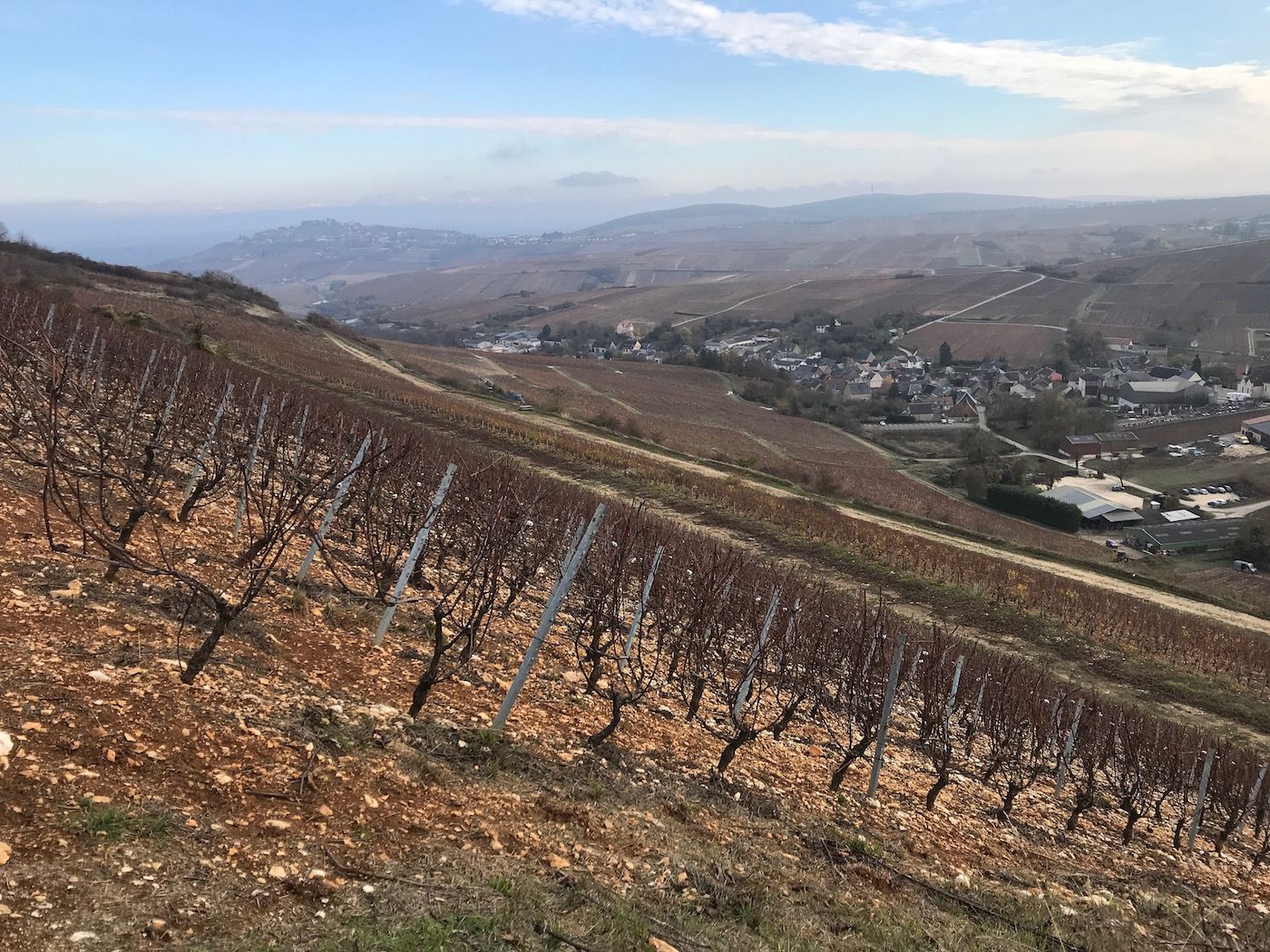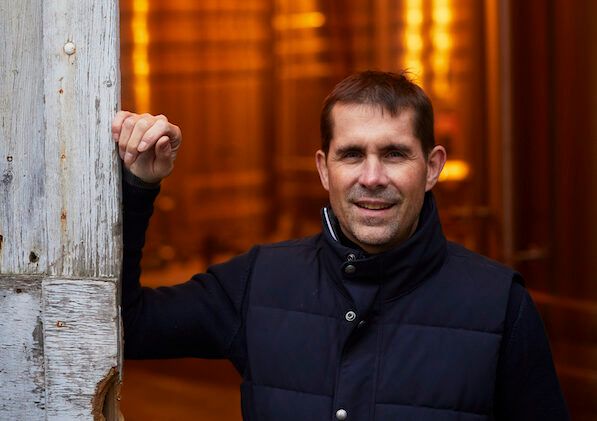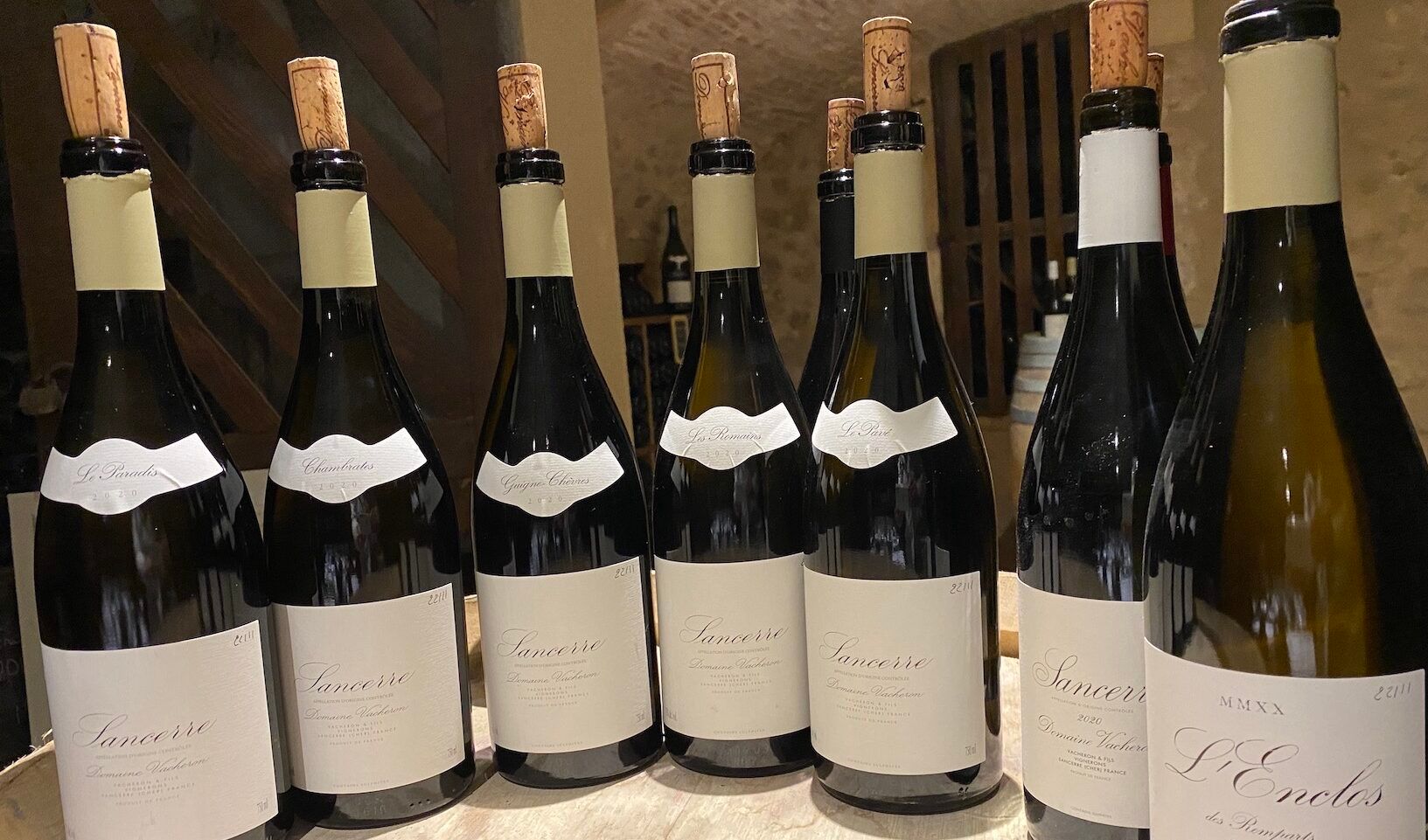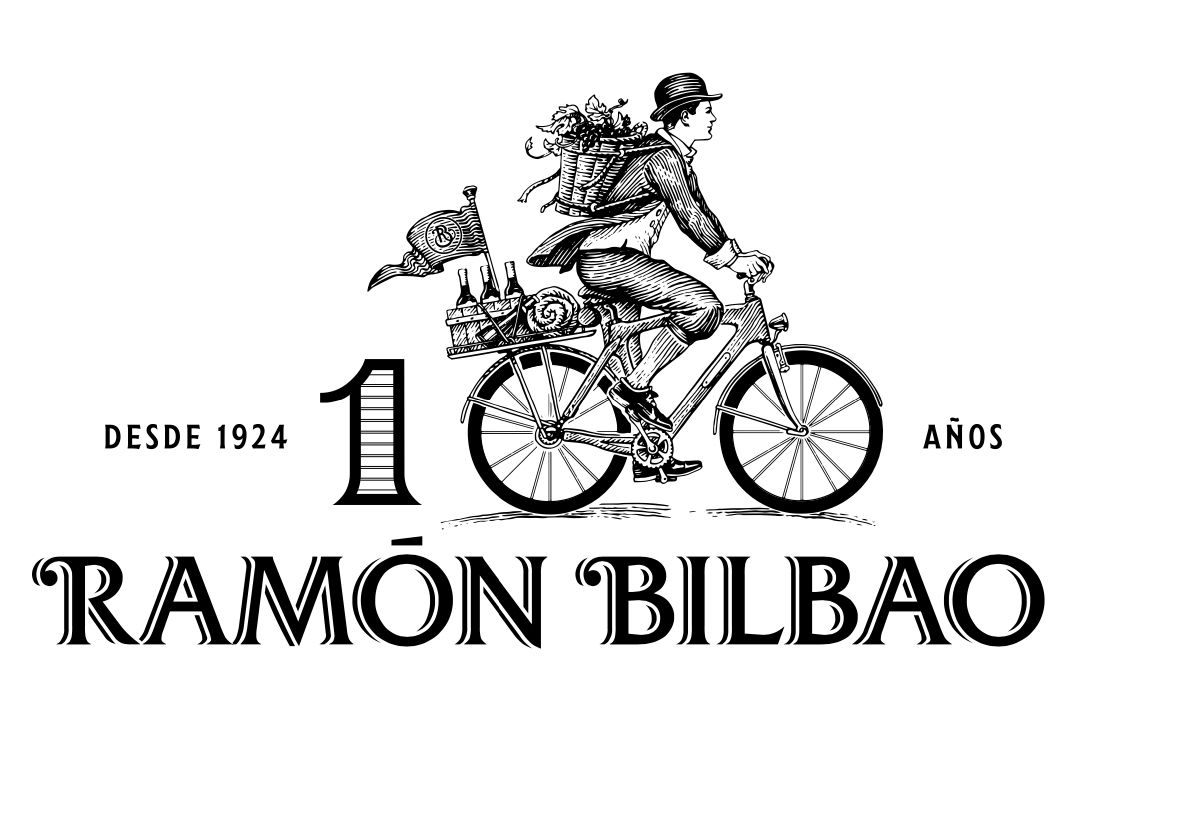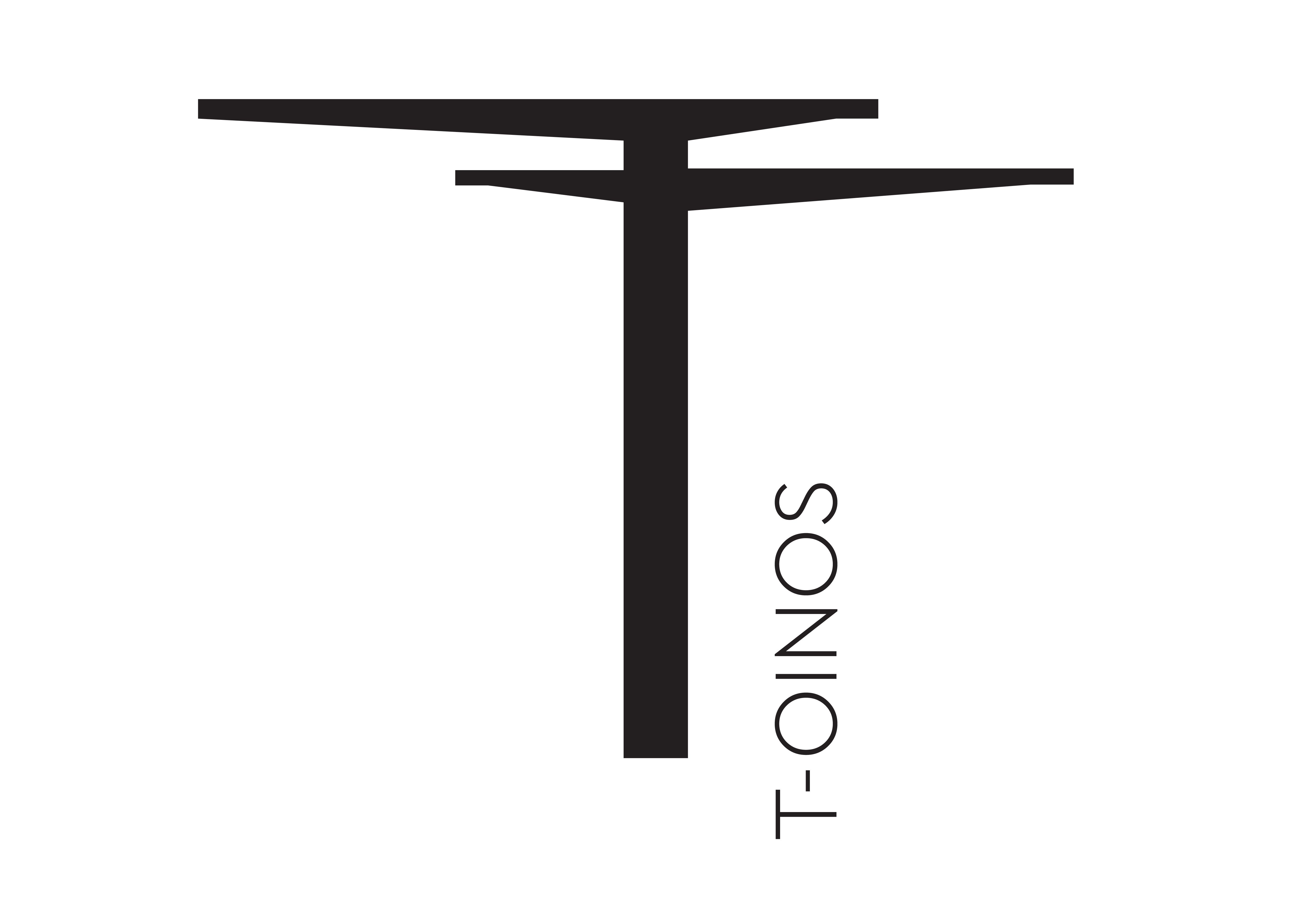You have to have a good reason to embark on a 10-year-long “grand projet” that involves re-developing multiple stone-built buildings in the heart of the medieval town of Sancerre. Domaine Vacheron’s major undertaking is still a long way from the finish line, having completed what they call phase one – the new and expanded winery.
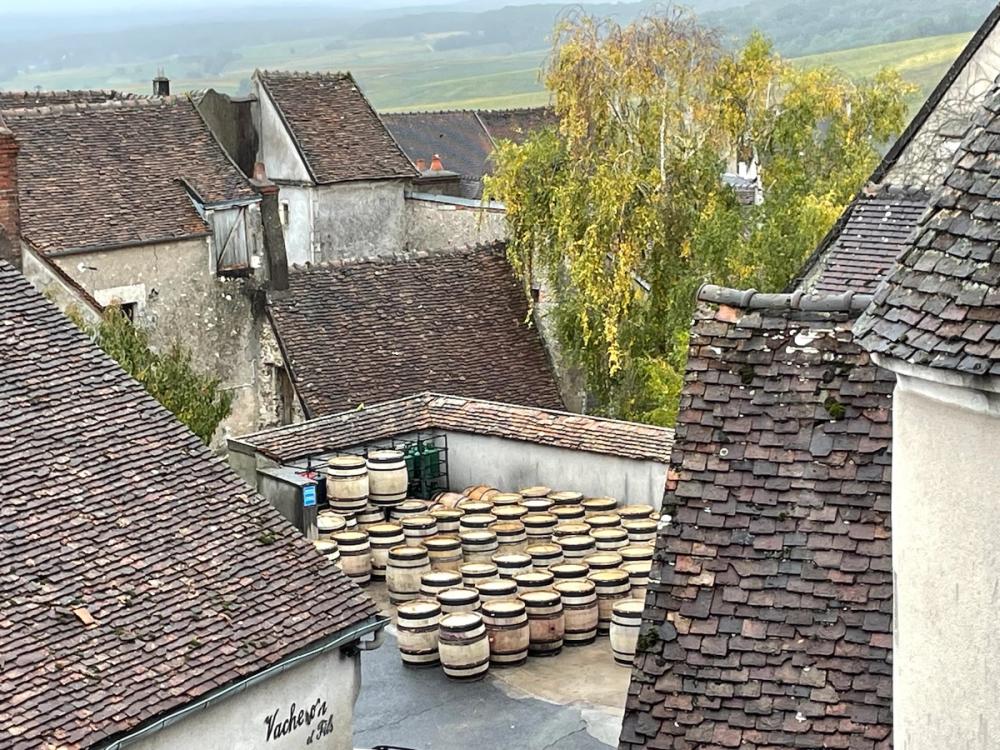
Vacheron's winery is located right at the heart of Sancerre
Jean-Laurent and Jean-Dominiqe Vacheron are cousins and the current custodians of the Vacheron domain, one of the most, if not the most, highly regarded producers in the whole of Sancerre. Their minutely fastidious approach to their different vineyard plots, working organically and doing much of the vineyard work by hand, has inevitably led to comparisons with Burgundy.
“The idea is to bring the concept of Burgundy to Sancerre, but not doing a bad copy of something that is done perfectly in Burgundy,” Jean-Laurent says. Vacheron was also among the first of Sancerre’s producers to treat its Pinot Noir-based red wines seriously and with respect.
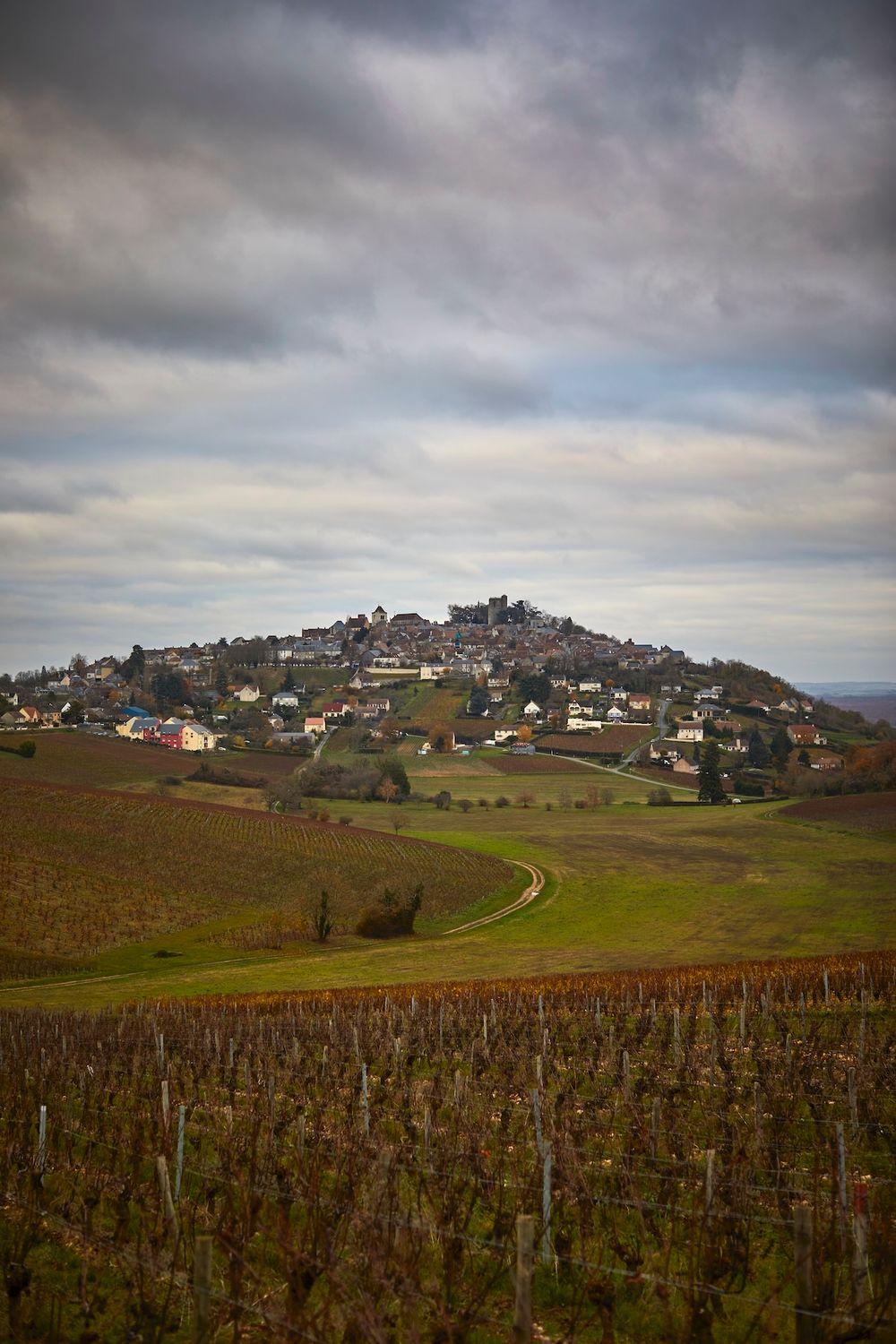
Sancerre from one of the many plots Vacheron owns located around this historic town
If you ever visited the Domaine Vacheron cellar in Sancerre in the past, you would probably have been struck by the higgledy-piggledy nature of the space, with small rooms connected by winding corridors. Atmospheric it may have been, but it clearly posed winemaking and storage challenges, which the cousins are addressing with their entirely re-vamped and expanded winery.
As well as being easier logistically, the greater capacity allows them to bring in grapes and process them at exactly the right moment. They have also been able, for example, to install wider fermentation tanks, which provide a greater surface area for extraction, leading to better quality wines as a result. They also have more space to store library vintages, which they can then periodically release to the on-trade.
The top floor of the new winery contains a proto-restaurant space, with stunning views over the town and across to all their vineyards. So far this has been used for specific one-off events, with the decision on whether or when to open it as a restaurant still to be determined.
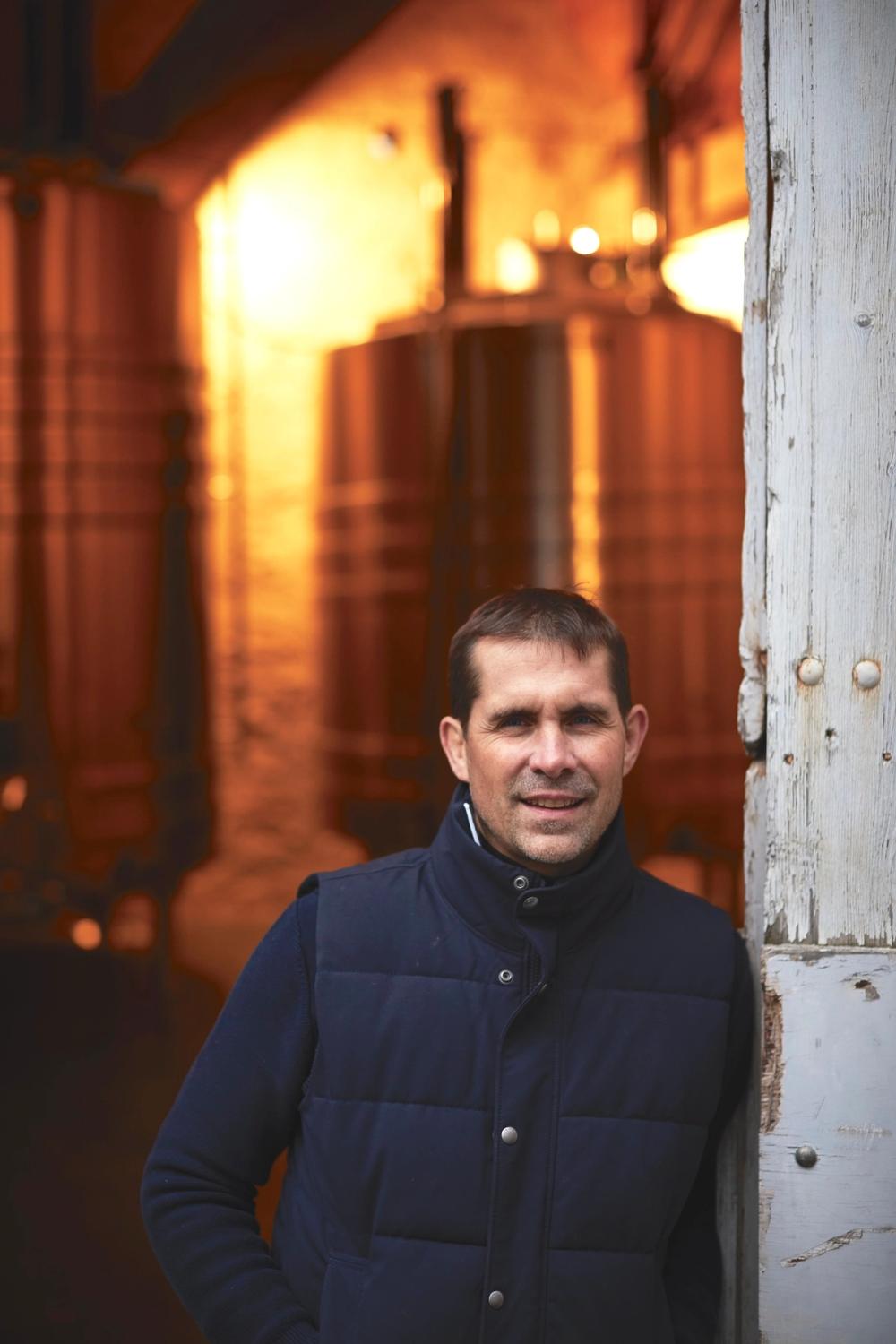
Jean-Laurent Vacheron outside the new vat room
Working within an historical setting has clearly been a challenge, but Jean-Laurent and Jean-Dominique are both committed to keeping their winemaking in the town, rather than moving out to a purpose-built facility, as many other producers have done. Now there are just three other producers (Château de Sancerre, Alphonse Mellot and Vincent Granne) in the town itself. “Sancerre without [wine] production is not Sancerre.” says Jean-Dominique. They are as quietly determined to maintain a presence in the town as they are to their painstaking approach to wine-making in general.
So how were the wines tasting?
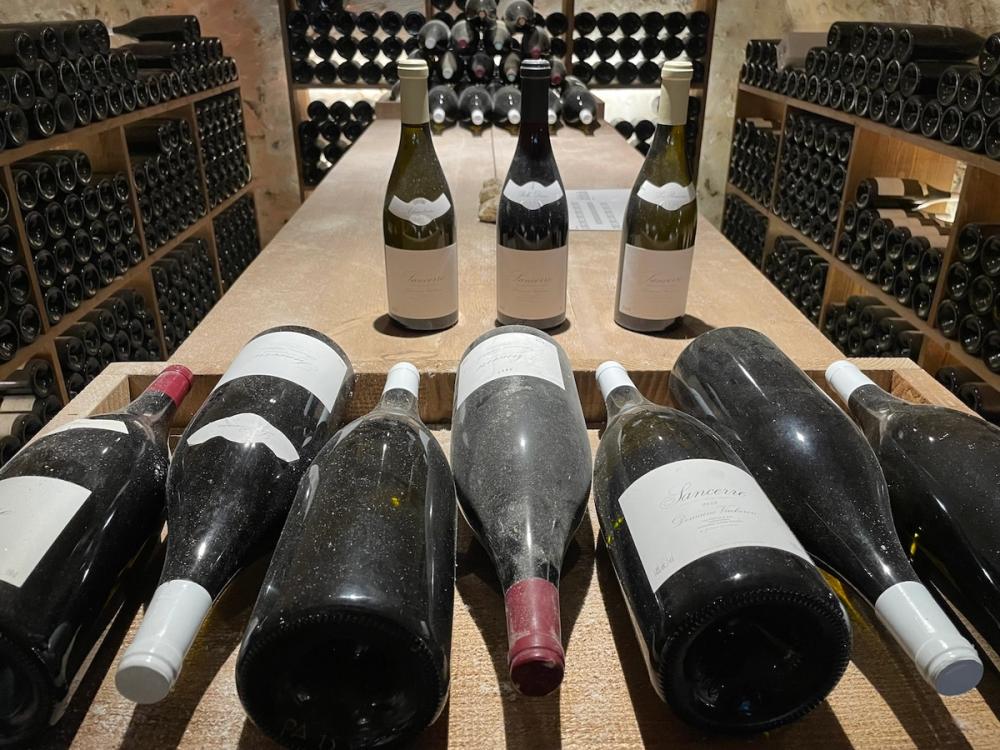
The revamped cellar at the domaine
To illustrate the Vacheron’s terroir-driven approach, we tasted a range of cuvées, all from the 2022 vintage, and made in their new facility.
We started with Le Paradis, grown on shallow soils over limestone, moving onto Chambrates on very stony Oxfordian limestone, then Les Romains on flinty soils and finally Le Pavé on cretaceous marl. Stylistically they move from the most mineral and delicate, through to richer and more earthy.
Le Paradis 2022 is from a 1.5ha south-facing plot of shallow soil over limestone which expresses finesse and an oyster shell minerality. The vineyard was replanted 20 years ago and after 10 years the cousins decided the time was right to give it its own bottling to illustrate the effect of the terroir, which combines ripeness of fruit and balance from the warm year of 2022. Jean-Laurent says that over time the minerality in this wine has become more marked – the acidity may vary year by year, but it always retains a mineral freshness. It’s an aerial style of wine which treads lightly on the palate and is a match made in heaven for goat’s cheese and seafood.
Chambrates 2022 is an historic 2ha flat plateau, first recorded as a climat in 1425. There is some iron-rich clay here but, overall, it is very stony. The clay gives more density and weight on the palate, combined with a chalky texture from the Oxfordian limestone. This is apparently a style that consumers find more approachable than the pure minerality of Le Paradis.
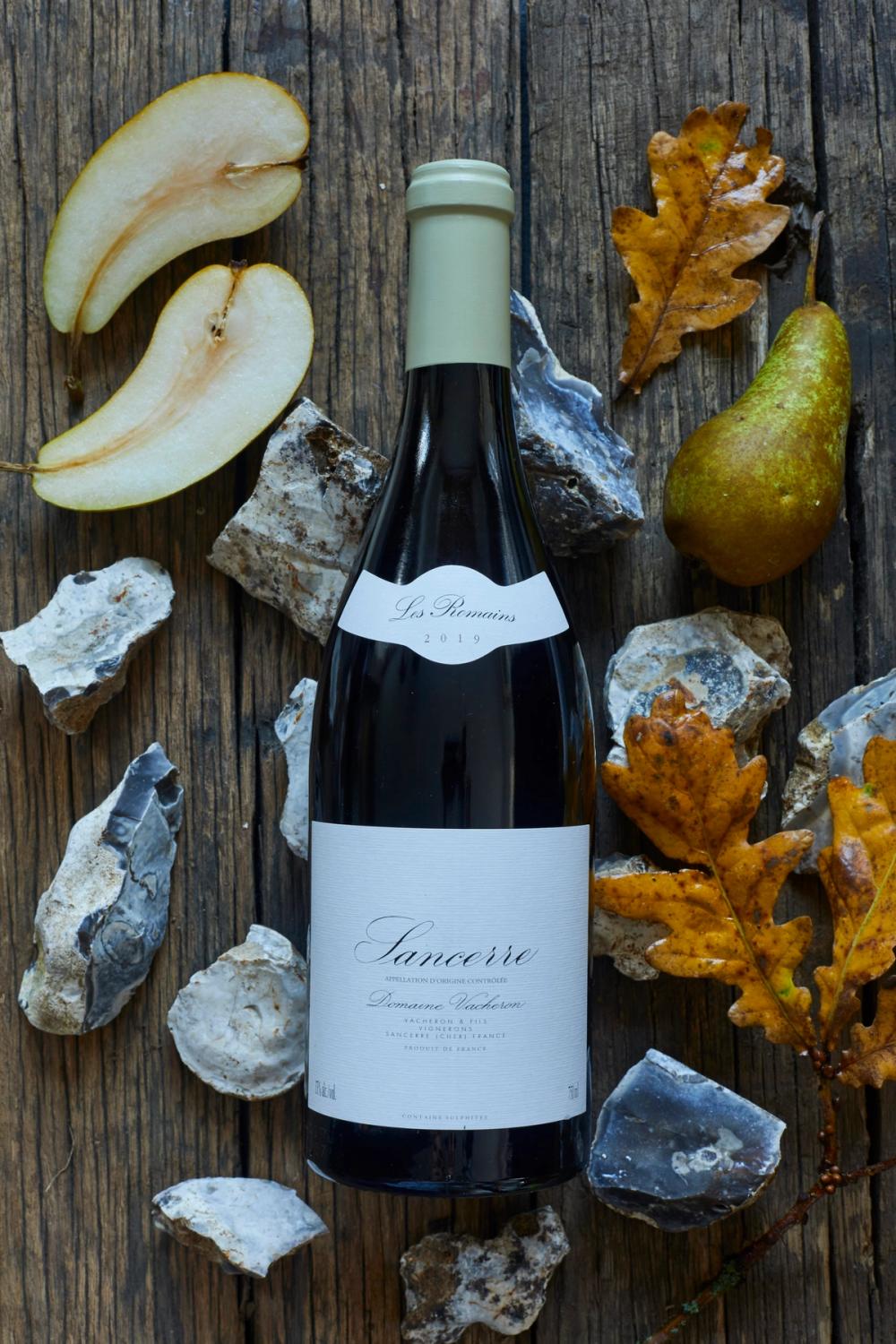
Les Romains 2022 comes from a flint terroir, planted by Jean-Laurent’s and Jean-Dominique’s grandfather. In a further example of their high standards and attention to detail, it is a 10ha plot but fruit from only 5ha is used for this cuvée. The Vacherons feel that flint gives a “good vibration” to the wine, which spends a year in large old barrels. It gives less away on the nose than the previous two cuvées, with rather austere aromas of gunpowder that typify flinty soils. The palate, however, combines richness, breadth and citrus freshness.
Le Pavé 2022 is from cretaceous marls in their closest vineyard to the Loire. Here, there is no bedrock, just clay, and the site is exposed to the sun all day. The clay, with its high levels of sodium, brings saltiness to the wine, a sense of acidity and great structure. It also has persistent, deep, ripe citrus flavours which they liken to a dish made with plenty of butter.
We finished the tasting of white Sancerre with their biggest production wine (200,000 bottles per year) the domain-wide blend, Vacheron Sancerre 2022, which combines grapes from old vines on a mix of limestone and flint soils (with a little cretaceous marl) and which makes for a textured, satisfying and complete expression of Sancerre. As the fourth generation of their family to make this wine, they feel an obligation to maintain and respect the methods of their forbears.
Their Domaine Vacheron Rosé 2022 combines the freshness of red fruits, delicacy and the underlying power of Pinot Noir. It’s a deeper colour than is currently fashionable, but undoubtedly a pretty and gastronomic wine.
Domaine Vacheron Rouge 2022, where the Pinot Noir fruit is macerated for a month, then spends a year in barrel (which are at least two years old) is fine and delicate and driven by the immediacy of its fragrant fruit – very much Sancerre Pinot Noir. Grapes come from both limestone and flint soils, which are vinified separately. As you might expect, they are not looking for extraction or concentration but are pleased with how their red Sancerre has evolved from more vegetal to emphatically focused on fruit. “Now year after year it is incredible” they say.
Future plans for Vacheron
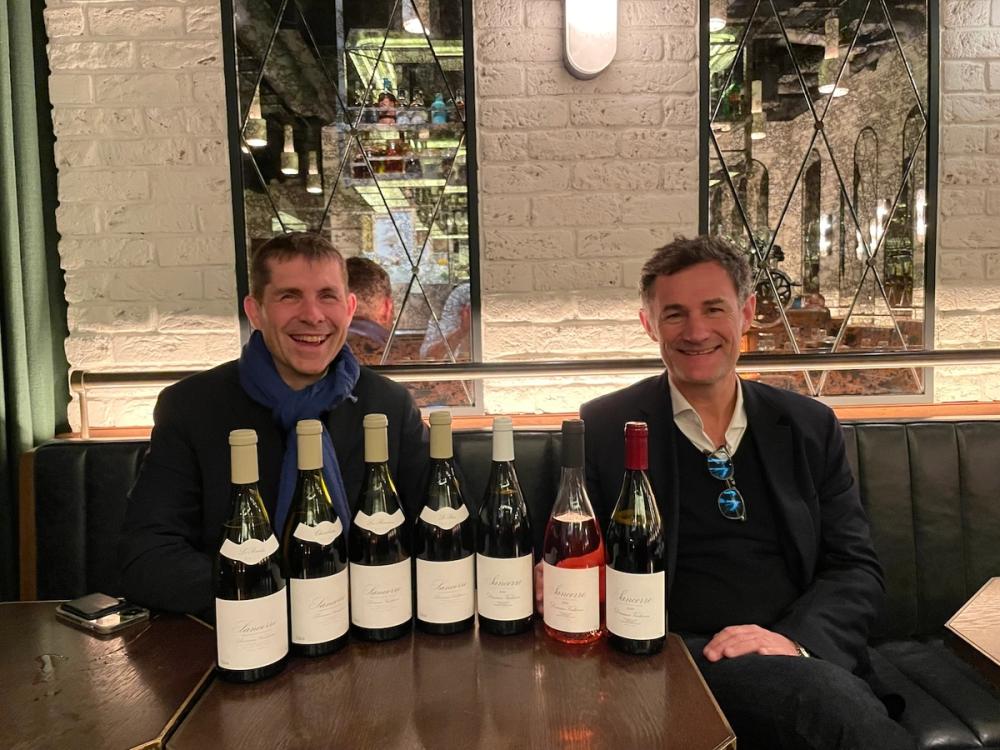
Jean-Laurent and Jean-Dominiqe Vacheron (l-r): committed to keeping winemaking in the centre of Sancerre
What’s next for the Vacheron family business; do they have grand plans to expand their holdings in Sancerre or elsewhere to make use of their expanded capacity?
Their focus on quality and specific terroirs means that plots of interest to them in Sancerre rarely come onto the market. Their bigger winery does not mean that they are simply chasing greater production. However, they do have a project on the go in neighbouring Menetou-Salon, where they have taken on a 6ha vineyard on clay limestone soils, though it will be a few years yet until they know whether they have something special on their hands.
A perma-threat to any family business, no matter how well-regarded and well-run it is, is the question of succession. It was therefore reassuring to hear that Jean-Dominique’s son is getting involved in the running of the domain, helping to ensure that the Vacheron name will be closely associated with Sancerre for many more years to come.
The wines of Domaine Vacheron are imported and sold in the UK by Pol Roger Portfolio which is a commercial partner of The Buyer. To discover more about them click here.


